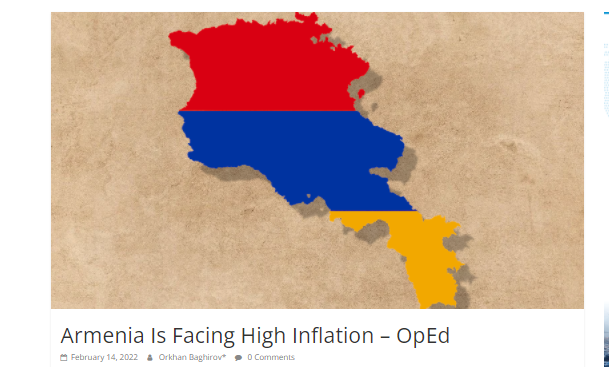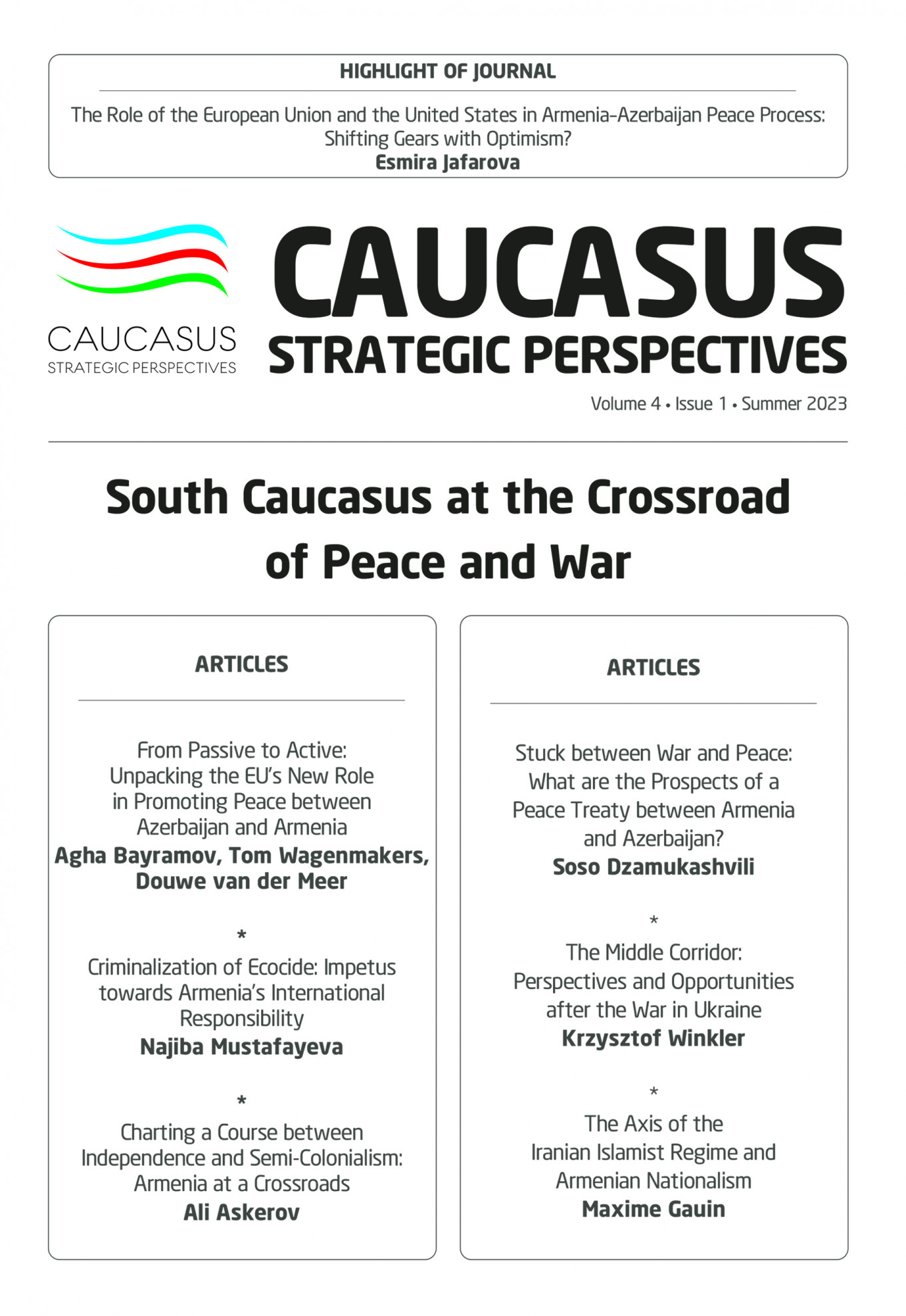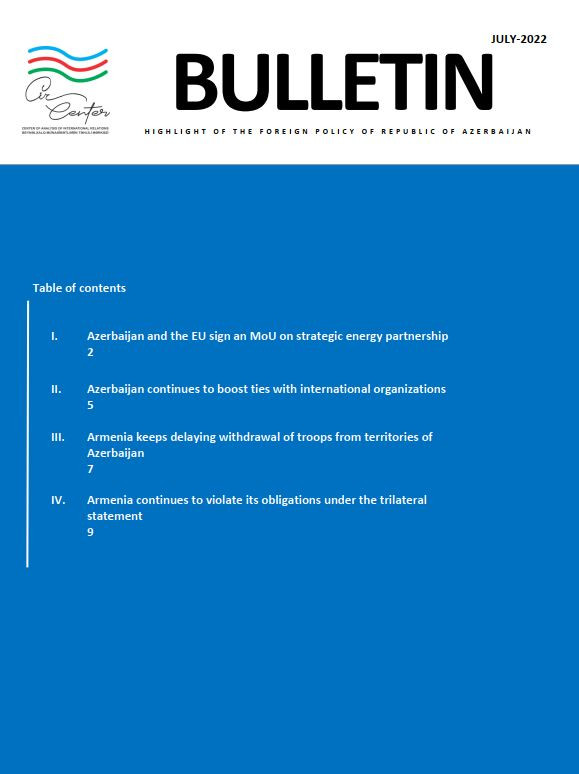After experiencing the low inflation period between 2012-2019 with an average inflation level of 2.3%, Armenia now faces high price increases for different products and services. Because of the defeat in the 44-Day War, the resulting shortage of various products and financial losses put pressure on inflation. However, in the initial period after the war, because of the low demand that was formed by pandemic related restrictions, inflation was not growing rapidly. Therefore, the pressure on inflation began to be felt more profoundly in 2021 after the spread of the virus had weakened.
According to the State Statistical Committee (SSC) of Armenia, during 2021, the annual average inflation increased to 7.7%. In the same period of 2020, inflation was 3.7%, and in the pre-COVİD period of 2019, it was 0.7%. In 2021, inflation was affected by the increase in the prices of food and non-food products by 12.5% and 8%, respectively. In the food market, the price of vegetables increased by 40%, fish and seafood by 31.4%, bread by 9.1%, flour by 9.7%, rice by 13.4%, and meat products by 7.5%.
In the non-food market, the price of gasoline and diesel fuel significantly increased, reaching 43.3% and 50.4% growth rates respectively, and the price of clothing and footwear in 2021 rose by 12.3%. The most notable increase in tariffs for services was recorded in the field of culture and recreation (11.9%). In the transportation sector, the price of services increased by 5.7%, in the restaurant and hotel industry by 5.5%, and in the health sector by 3.2%.
The Central Bank of Armenia forecasted an even higher inflation rate than SSC. According to the bank’s forecast, inflation in 2021 was expected to be at 8.4%, with a subsequent decrease to 5.5% in 2022. The rise in consumer prices in Armenia in 2021 was accompanied by a 6.5% revaluation of the national currency (dram) against the dollar. However, even with a strong currency, inflation in 2021 was about two times higher than in 2020, which shows that inflation is the real challenge for Armenia.
High inflation is continuing in Armenia in 2022 as well. According to SSC, the 12-month inflation in Armenia’s consumer market in January of 2022 amounted to 7.1%. Prices in January were 1.6% higher compared to December 2021. The main factors that lead to the continuation of price increases are the changes in communal tariffs, some taxes, and custom duties.
Based on the decision of the Public Services Regulatory Commission of Armenia (PSRC), starting from January 1, 2022, the tariff of water for consumers increased by about 11%, and from February 1, electricity prices in Armenia are expected to increase by an average of 4.7%. According to the new changes, electricity tariffs for consumers using up to 200 kWh per month (55% of consumers) will increase by about 3-5% per kWh, consumers using from 201 to 400 kWh per month (25% of consumers) will pay 8–11% more per kWh, and the tariff for consumers using more than 400 kWh per month will increase by 15–18% per kWh. These changes are expected to affect the consumer price index at a level of 5%.
Along with the electricity and water prices according to some Armenian experts, in November of 2021, a new gas agreement was secretly signed, according to which, from April 1, the import price of the gas will increase by 5%, the tariff for preferential categories of consumers will increase by 33.1%, for greenhouse and processing enterprises by 23.8%, and for CNG filling stations, thermal power plants, and other large consumers by 8.3%. The tariff for gas consumers up to 10 thousand cubic meters per month will decrease by 4.2%. However, these changes have not been officially announced by the government yet. The increase in gas prices in Armenia was expected as the prices of natural gas in the world market saw record highs in 2021. This presumably made Gazprom, the company that supplies gas to Armenia, increase the price of the exported gas, which in turn made Gazprom Armenia ask for the PSRC to increase the tariffs.
Along with the utility costs, an increase in some taxes and duties entered into force from January 1, 2022. According to the new changes, the property tax was increased by 5%, the excise tax on a liter of alcohol by 30%, and the excise tax on cigarettes by 14%. The customs duty on frozen beef imported from third countries was increased by 25%, on chicken by 30%, and on rice and margarine by 2%. These changes significantly affect the inflation of the food products that are included in the minimal consumer basket of the population. Also, the customs duty on silver was increased by 4.5% and that on gold by 3–6%.
The Armenian government also increased some pensions and allowances in order to compensate for the negative effects of the price increases on the low-income population. Starting from January 1, the minimum level of pensions increased by 7% to $59.3 and the allowance for children under 2 years also reached $59.3. Disability pensions for servicemen and pensions for the families of martyred servicemen increased by $6.2. Allowances for children with disabilities were increased by 39%, to $76.7. However, these small changes to the pensions and allowances were not enough to compensate for the price increases of different products, especially food products. According to the government officials of Armenia, because of the scarcity of financial resources, that is what is possible for now.
Along with the mentioned domestic factors, the high level of global inflation also affects the price increases in Armenia. Global consumer price inflation reached 5.2% in 2021, its highest pace since the 2008 financial crisis, and this significantly affects inflation in different countries around the world. For some consumer products, including food products, Armenia is dependent on imports from other countries. Therefore, global inflation directly affects the inflation level in Armenia.
All the processes in Armenia regarding inflation show that the Armenian government cannot maintain price stability in the country. First of all, it cannot prevent the influence of global inflation on the domestic economy. On the other hand, the government had to increase the utilities, taxes, and duties in order to maintain the stability of the fiscal policy in the country. In previous years, the Armenian government had to change budget projects, which also led to an increase in the public debt. Hence, the government is currently trying to implement a more viable budget policy. This approach strengthens the financial security of the country but puts the burden of the high prices on the population. Despite the fact that some international financial institutions and the Armenian government project that inflation in 2022 will approach the target level of 4%, with the continuing global inflation and raised taxes, duties, and utilities, it is doubtful that the target level can be reached in the near future. Therefore, the continuation of the high inflation levels could create serious socio-economic problems in Armenia.
https://www.eurasiareview.com/14022022-armenia-is-facing-high-inflation-oped/








